Online Resources For Teachers
Because biodiversity is increasingly threatened – and future generations are key to reversing or slowing this trend – Klorane Botanical Foundation is working alongside primary school teachers and giving them various resources to help create lessons and activities on nature.
All the materials made available here are PDF versions of the physical resources included in the Budding Botanist School Kit, 1,500 copies of which were distributed at the start of the 2021-2022 school year in France.
What would introducing botany into your classroom look like?
Adapted to school children aged 9–11 and in line with school curricula, all our teaching materials encourage pupils to develop a more global vision of the plant world (its richness, its intelligence, its connections to living things as a whole, threats to biodiversity, different ways of protecting it...). There are also plenty of opportunities for group debates, alongside fun and practical activities.
For teachers: a user guide for the various resources is available
Activities have all been designed in a modular fashion. It’s up to individual teachers, depending on their term teaching plans and the level of interest shown by pupils, to decide how much time they want to allocate to each topic.
Activities can be used for standalone sessions. Even where logical links exist between resources, they can lend themselves to individual sessions.
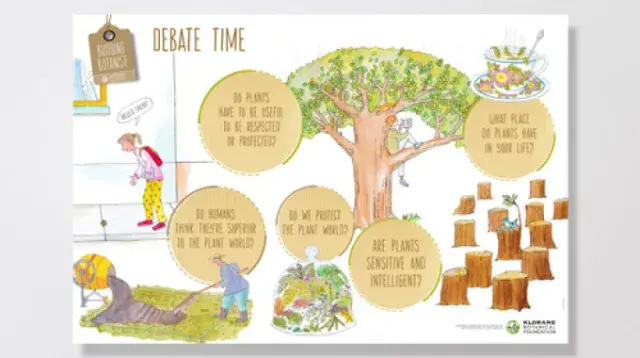
‘Debate time’
Poster
This poster can be used as an introduction or class activity when pupils have already started to reflect on the world and the role of plant life within it.
Printing tips: landscape - colour - A3 minimum
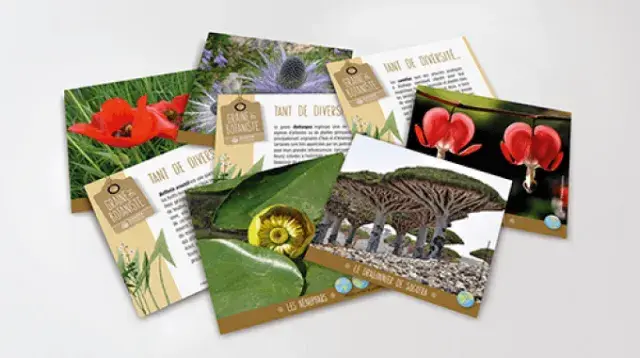
‘So much diversity’
Plant info cards
The cards are designed to impress pupils and develop their curiosity for the plant world, whether that’s the one around them or on the other side of the planet. The assumption here is that by making them curious, giving them time to observe and share anecdotes, they’ll develop a respect for the living world.
Printing tips: portrait - A4 colour - front & back/42 sheets to be cut up
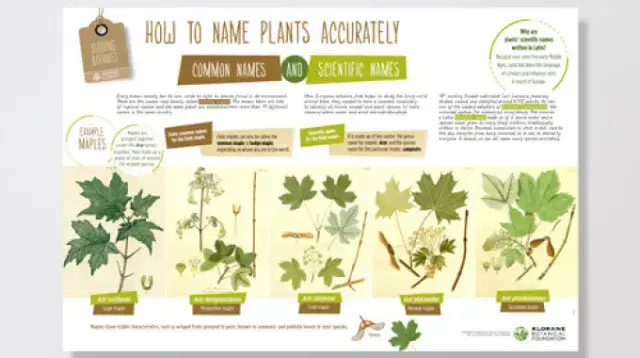
‘How to name plants accurately’
Poster
This poster gives pupils the chance to develop their observation skills and use scientific vocabulary.
It highlights the concept of common characteristics and differences between related species. It helps pupils discover binomial classification and differentiate between genus and species.
Printing tips: landscape - colour - A3 minimum
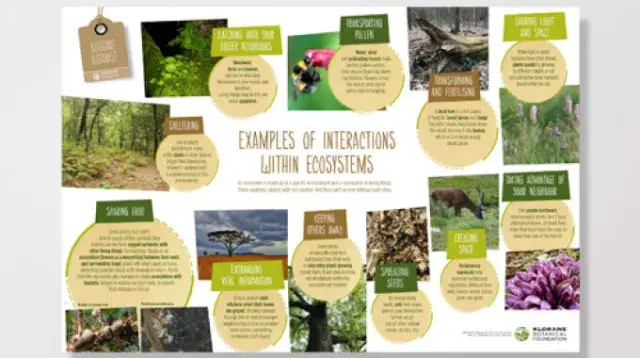
‘Understanding ecosystems’
With the poster on inter-relationships between all the living things in an ecosystem.
Printing tips: landscape - colour - A3 minimum
With the mini-mag that contains 3 educational examples: a hedge, a mangrove and a pond.
Printing tips: landscape - A3 or A4 colour - front & back (to be folded in the middle)
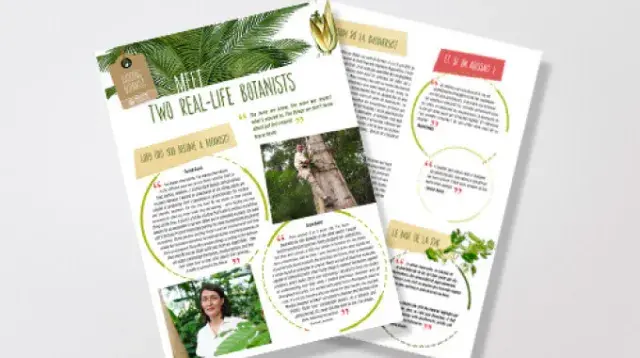
‘Meet two real-life botanists’
Mini-mag
- Discover what a career in botany involves
- Explore individual links with the plant world
- Understand what respect for the plant world really looks like
Printing tips: landscape - A3 or A4 colour - front & back (to be folded in the middle)
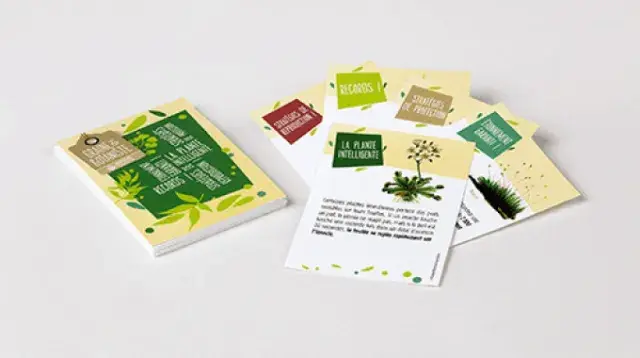
‘The game to spike curiosity’
40-card game
The goal is to help pupils discover the strategies plants have developed over time to help them survive – along with some amazing world records – in a fun and entertaining way.
Rules of the game are available on page 5 of the Teacher's Guide.
Printing tips: landscape - A4 colour - front & back (40 cards to be cut up) on thicker paper
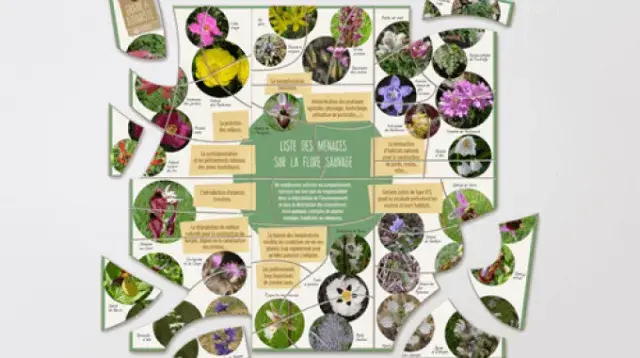
‘Biodiversity in danger’
Puzzle
Pupils will be able to understand the causes of biodiversity erosion, in particular the role of human activity. The plants shown here are all endangered and appear on the IUCN red list.
Discover
Printing tips: portrait - A4 colour - single-sided (6 cards to be cut up) on thicker paper
Can also be displayed as a poster (printed on A3 paper minimum): : Discover
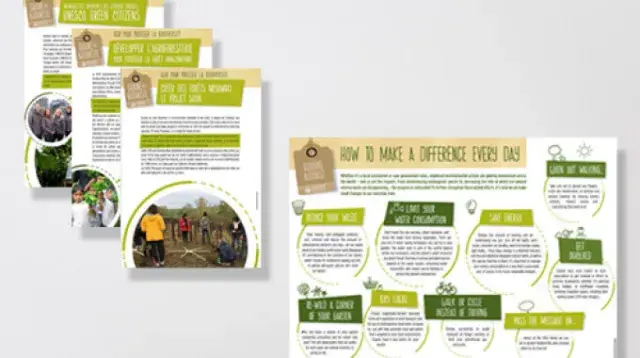
‘Taking action to protect biodiversity’
12 examples of actions being carried out around the world by associations, institutions and citizens.
Printing tips: landscape - A4 colour - single-sided - 6 pages to be cut into pairs
1 poster to help pupils imagine actions they could take themselves in their own local area.
Printing tips: landscape - colour - A3 minimum
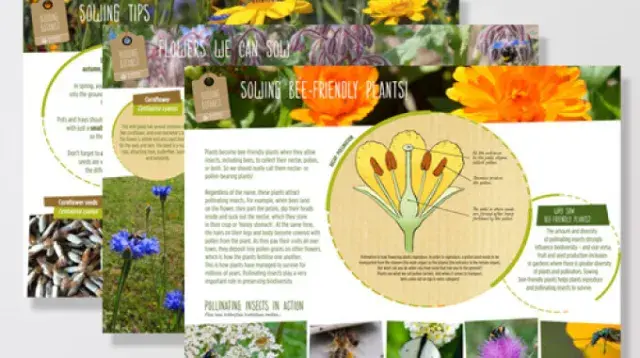
‘Sowing bee-friendly plants’
3 posters
- Defining bee-friendly plants and pollination. Discover
- 4 examples of plants that attract different pollinators (cornflower, borage, pot marigolds, edible chrysanthemum). Discover
- Sowing tips (for those able to work with seeds). Discover
Printing tips: landscape - colour - A3 minimum
But that's not all... there’s also the Budding Botanist Interactive Quiz for ages 6-10
True or false questions, riddles, a quiz... everything needed to discover the wonders of the plant world.
From the life cycle of plants to how humans can use them, as well as the role of ecosystems, this interactive game helps raise awareness among even the youngest minds of the challenges facing biodiversity!
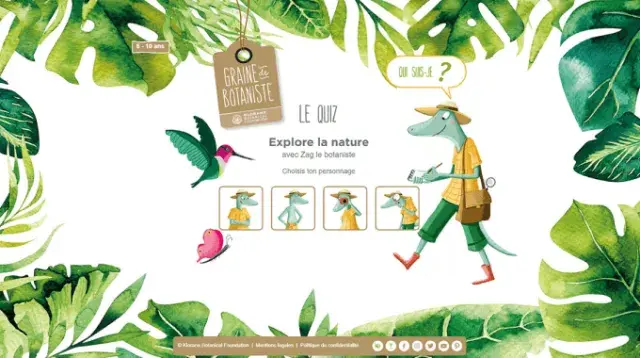
Can be used in the classroom:
- As a group, by projecting the questions onto a big screen;
- Individually, if your school has personal computers or tablets for pupils.
We recommend pupils aged 6-8 follow the beginners level and those aged 8-10 take the advanced level. The riddles are suitable for all ages.
